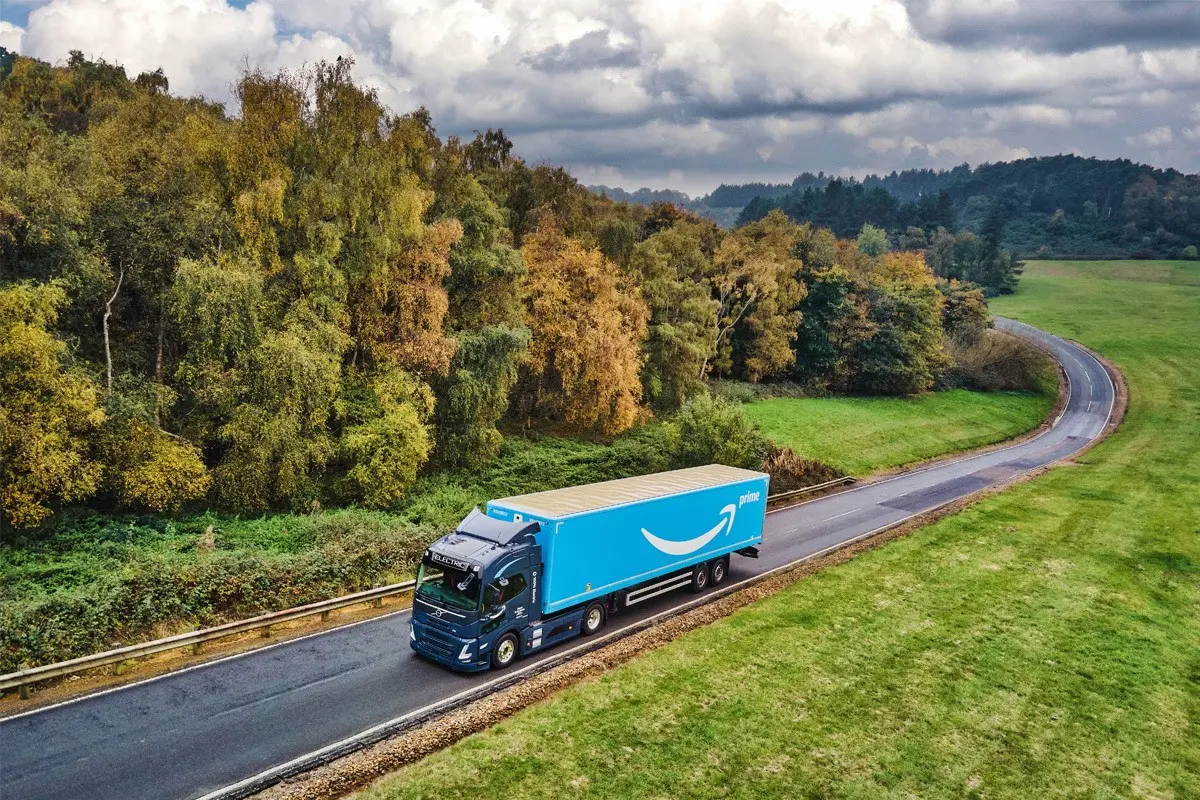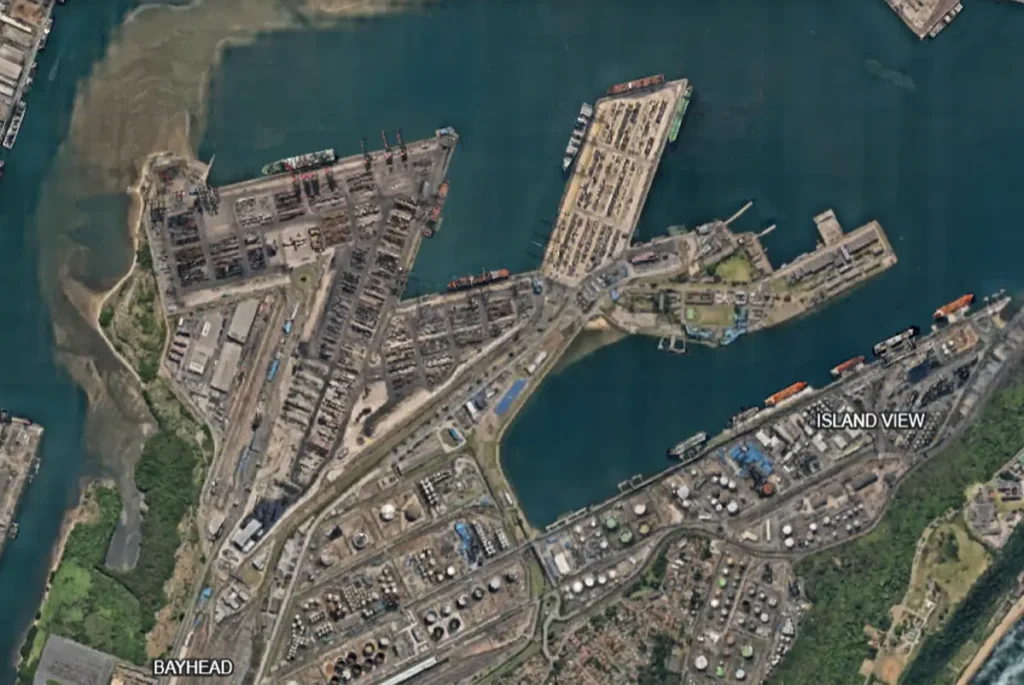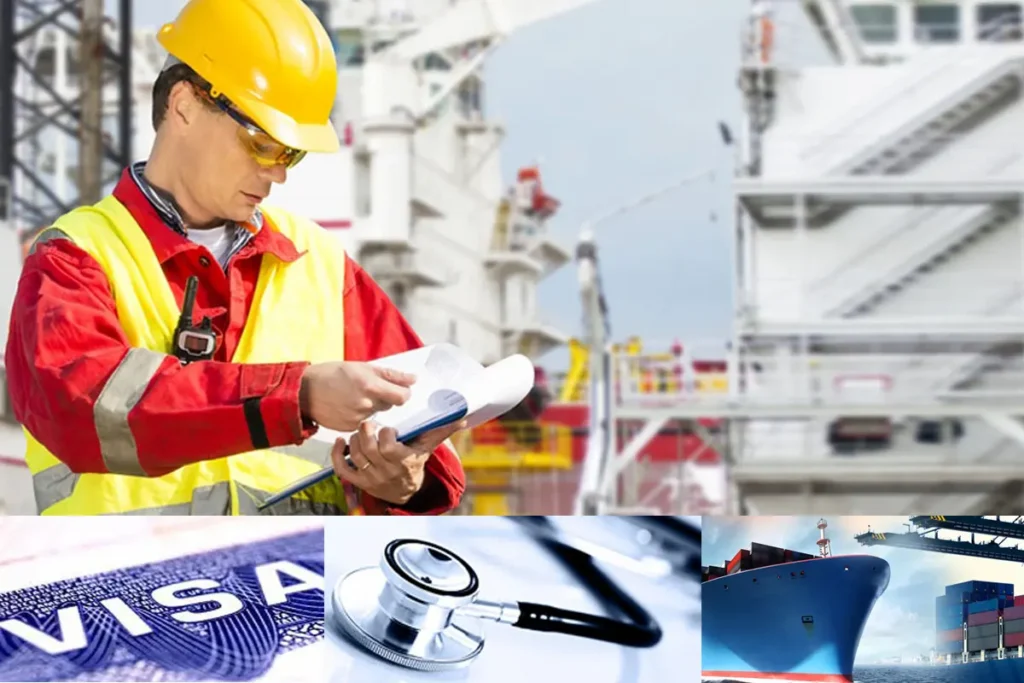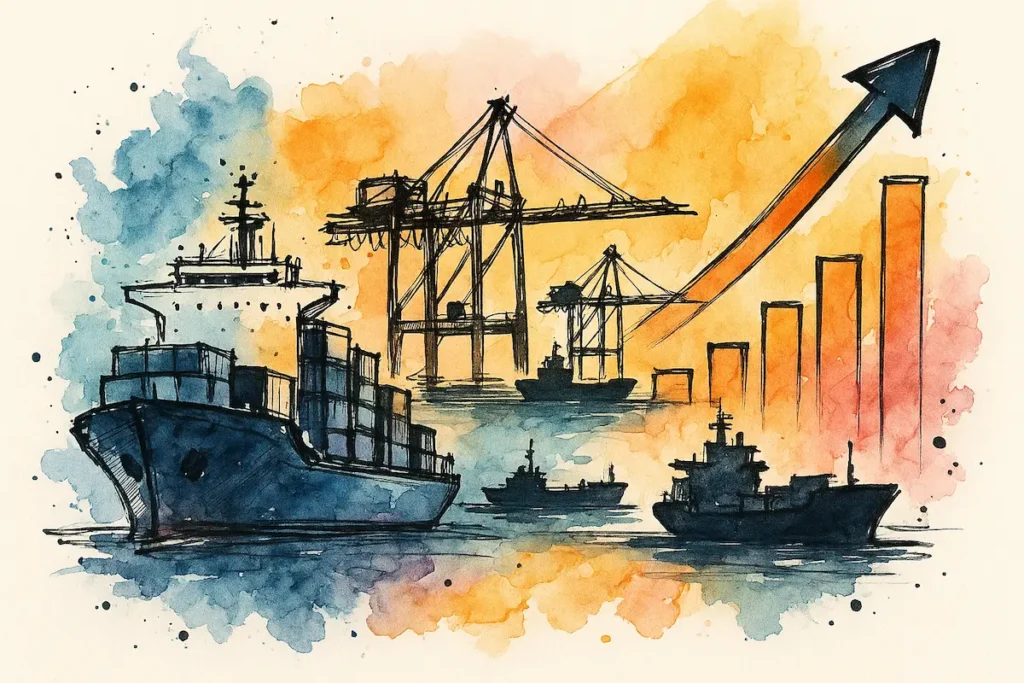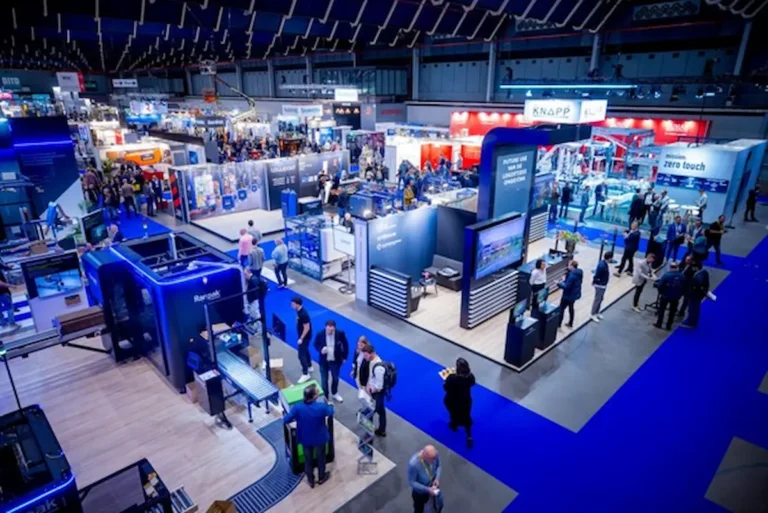Last month, Amazon released the Amazon sustainability report, offering a deep dive into how the global company is embedding decarbonisation efforts across its business units.
The headline stat is that Amazon has now powered its global operations with 100% renewable energy for two years running, well ahead of its 2030 target.
But that’s just the beginning. As well as exploring Amazon’s sustainability efforts as a whole, the report also includes plenty of decarbonisation insights relating to Amazon Freight, the company’s middle-mile logistics technology solution.
Here, we’ll look at the key takeaways from the logistics sustainability report for the freight industry.
Electric heavy vehicles (eHGV) move from pilot to deployment
Firstly, Amazon Freight is expanding zero-exhaust emission deliveries through the use of electric vehicles for the middle mile. In early 2025, it placed its largest order yet, procuring over 200 Mercedes-Benz eActros 600 eHGVs for use across Europe.
These eHGVs will be used for high-mileage routes across Amazon’s middle-mile network in the UK and Germany. Once fully operational, they are expected to move more than 330 million packages a year.
While vehicle charging can be a concern, Amazon is combating this by installing 360kW electric charging points at key sites. These points can charge the vehicles to 80% in just an hour.
Low-carbon fuels fill the gap where electric vehicles (EVs) can’t
While electrification is a long-term strategy, Amazon clearly recognises that its customers need shorter-term solutions to meet their sustainability goals. So, in 2024, the company also increased its use of renewable diesel, up to 4.7 million gallons from just 286,000 the year before.
It also sourced sustainable aviation and marine biofuels to reduce emissions from air and sea cargo. These fuels offer customers an immediate, no-hassle way to reduce emissions without sacrificing route efficiency.
Rail and sea are central to Amazon’s multimodal strategy
Cleaner fuel isn’t the only way to reduce environmental impact. Multimodal transport can also move the needle, and Amazon is pioneering its use. In 2024, the company moved 90% of its transoceanic imports by sea (and just 10% by air) and increased its use of rail in Europe by 59%.
– Advertise here –
Not only are these route options cleaner, but they can also be much faster. Rail, for example, can move more freight (and at higher speeds) than road.
Because of rail’s promising benefits, Amazon also launched electric rail deliveries in the UK for the first time in 2024, and is expecting to move over 5 million products via rail in 2025.
Combined, these routing options make it much easier for Amazon Freight customers to lower their emissions while unlocking the flexibility of different transport modes.
Looking ahead: €1B investment in EU decarbonisation
For all the work done last year, Amazon isn’t slowing down. Beyond the insights shared in its sustainable transport report, the company also recently pledged to invest more than €1 billion to further electrify and decarbonise its European freight operations.
For shippers and carriers, this makes Amazon Freight a pioneering partner for more sustainable freight transportation. Thanks to ongoing investments in fleet efficiency, lower-carbon fuels and multimodal transport, the company is helping its customers accelerate the movement towards a cleaner future for the planet.
You can read the Amazon sustainability report in full here.

